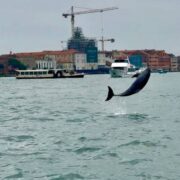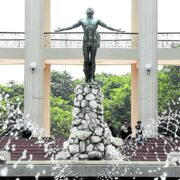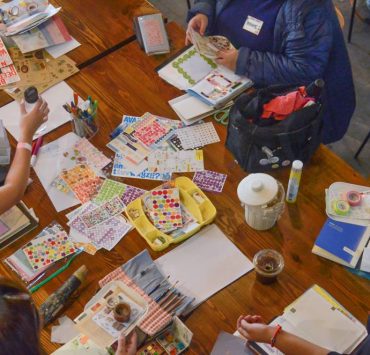Art and activities at the ‘Demon Slayer’ exhibit
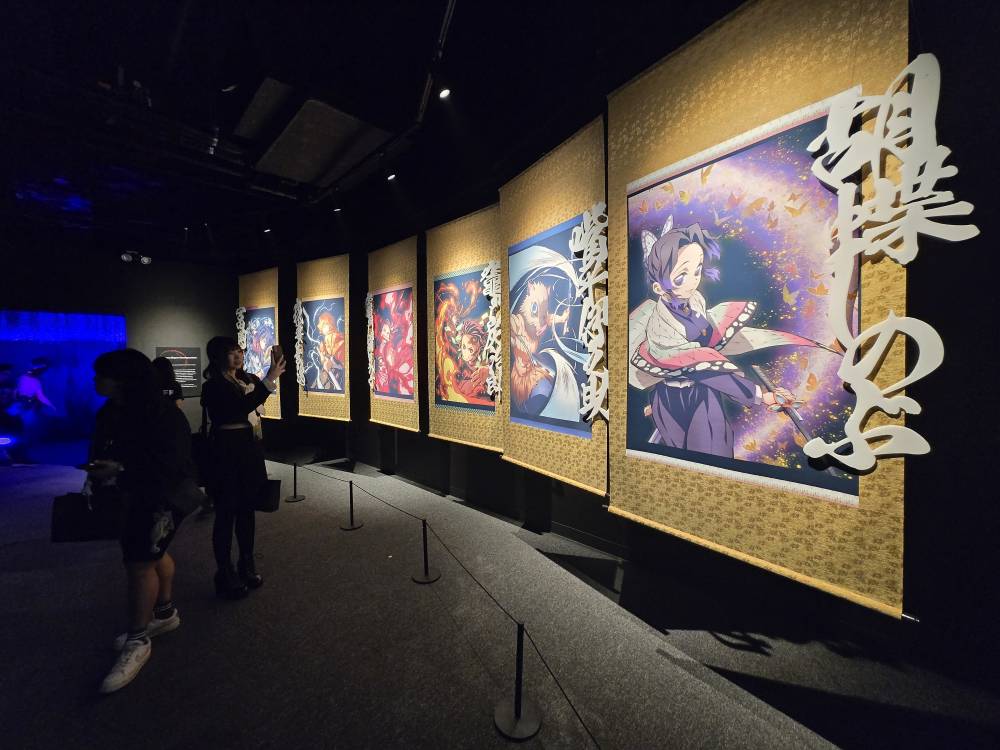
It’s not easy to become a Hashira. They are elite swordsmen and women elevated to the highest position in the Demon Slayer Corps. Hashira means “pillar,” which symbolizes their roles. It takes a lot of time, training, mastering a breathing technique and slaying a number of demons to become one. There are typically nine Hashiras at any given time.
This is what the “Demon Slayer: Kimetsu no Yaiba Total Concentration” exhibition offers: the fantasy that you can walk in their shoes and become a Hashira by the time you reach the end of the showcase. That or at least see the world through the eyes of Tanjiro Kamado. The exhibit is organized by Pulp Spaces and Muse.
“Demon Slayer” is a Japanese manga written and illustrated by Koyoharu Gotouge. It has 23 volumes and is one of the bestselling manga series ever. It was eventually adapted into an anime. The exhibit is based on the art of the anime.

“Demon Slayer” is about Tanjiro who tries to find a cure for his sister Nezuko, who was turned into a demon after an attack on their family. He then trains to become a demon slayer in the hopes that he will find a way to reverse the curse on her the closer he gets to the demons.
SwordsThe exhibit starts by “meeting” Tanjiro’s instructor, Urokodaki Sakonji. There’s an illustration of him on the wall, next to his haori (outer coat) and sword. This sets the theme for the exhibit. Characters in the anime are introduced through the swords they have.
But the real opening is Mount Fujikasane where pink wisteria blooms fall from the ceiling in abundance. This is one of the first of the many photo stops visitors should take advantage of because there are a lot of displays that cannot be photographed inside.
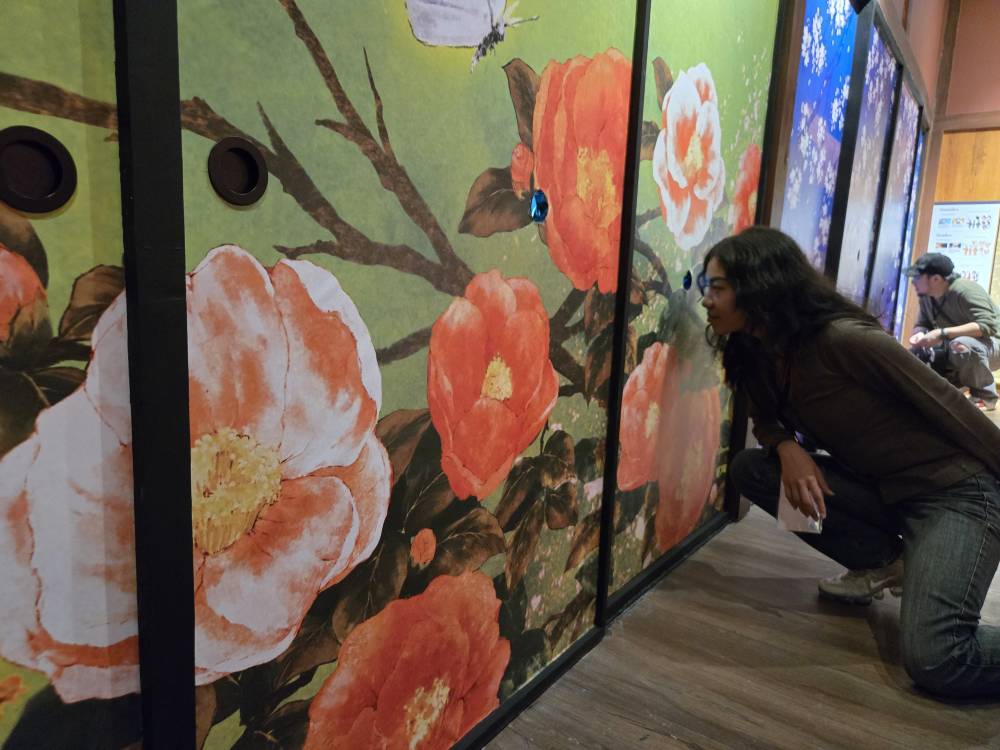
The no-photo zone includes the gallery of Nichirin swords, demon slayer weapons made out of sunlight-absorbing ore. The first swords on display are that of Tanjiro’s friends Zenitzu and Inosuke; and the first Hashiras he met such as Giyu and Shinobu. Typical swords are often differentiated through the hilt. Shinobu has the prettiest one with the butterfly-shaped handguard lined with glitter jewels that match so well with her butterfly haori. Those jewels sparkle and shine under the light.
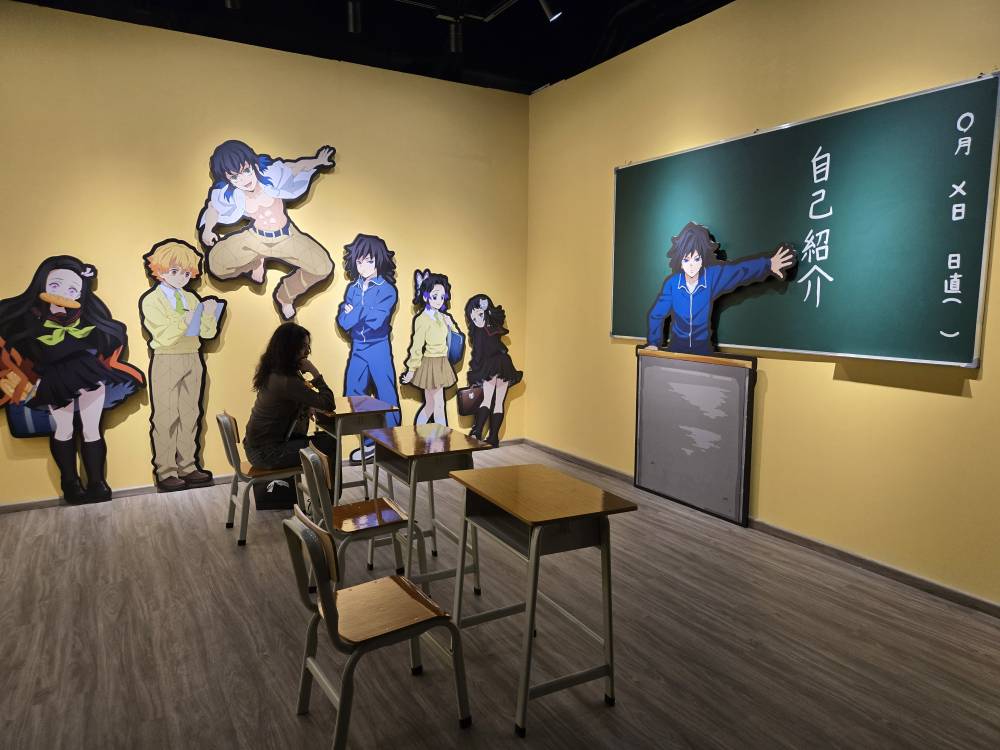
But the Nichirin blade also takes after the breathing style of its owner. It changes its color the first time it’s held. Tanjiro’s is black, Zenitsu’s is yellow, Inosuke’s is deep indigo, and Giyu’s is blue. These colors are something you can appreciate up close, inspecting them through the protective glass. Even Inosuke’s double swords with jagged edges have come alive.
The displays are supposed to be life-sized, including Nezuko’s box. One of her powers is that she could transform into a child to fit inside the cedarwood carrier that Tanjiro would strap on his back. It’s surreal to see this box in person because you can imagine her size through it.
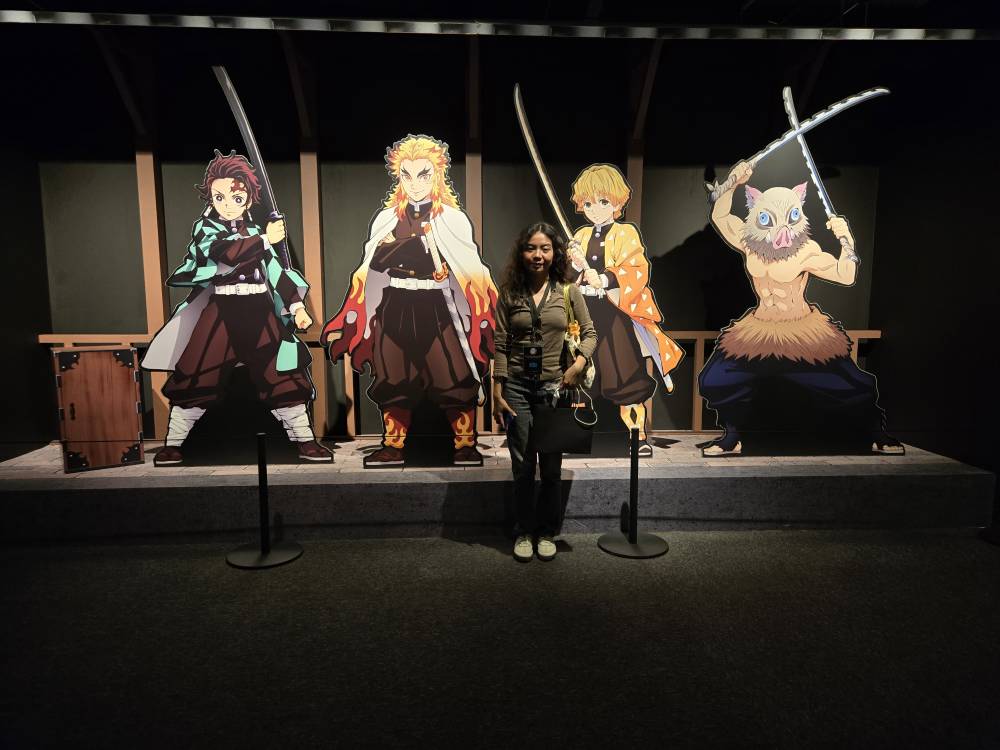
The information on the Demon Slayers is broken down, their hierarchy is plotted in charts, and their memorable moments and qualities are displayed in Japanese on scrolls with English translations next to them.
Concept art
Concept art of the anime are displayed as a gallery and one could see the progression of a story arc. They were hand drawn on paper by the artists of Ufotable, producer of the anime. It’s a long gallery where you can appreciate the creativity and artistry behind the beloved show.
One of the promises of the exhibit is that it is an immersive one. There’s a three-level game you can play on your phone that you should win to earn a certificate at the end of the exhibit. A curved screen that depicts Tanjiro running on Mount Natagumo allows you to pretend to be inside his head because his breathing can be heard, the ground shakes with each step and the opponents look straight into your eyes.
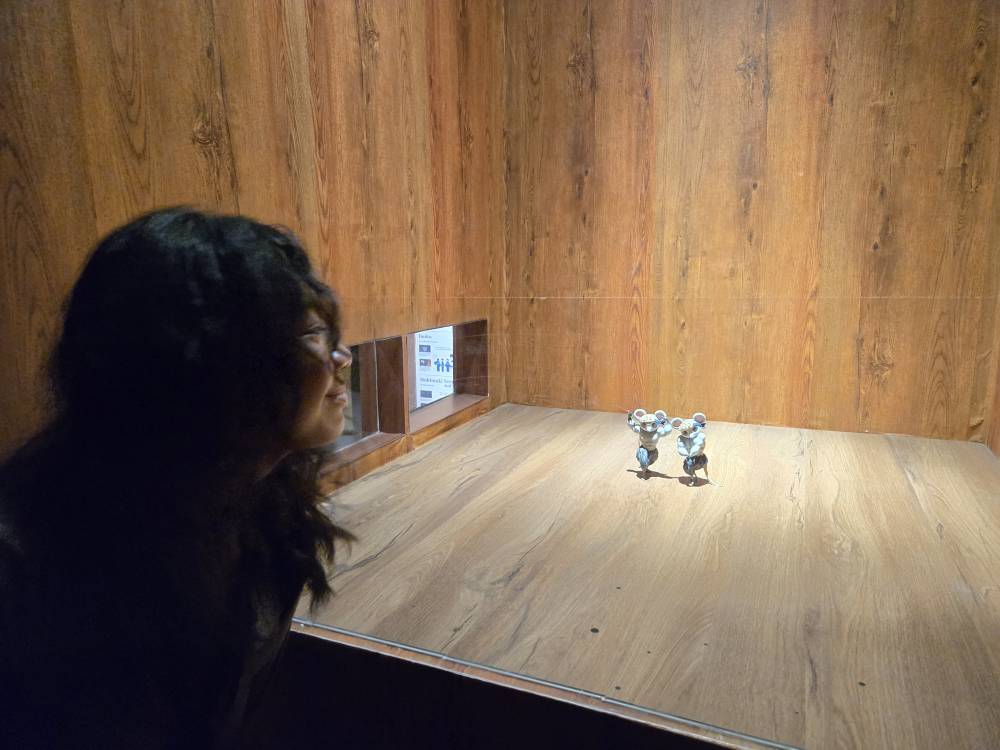
There’s a recreation of the endless dimension of Infinity Castle that you can put your head through. You meet demons of all ranks like the drum demon Kyogai, spider demon Rui, upper-rank six siblings Daki and Gyutaro, and lower-rank one Enmu who invaded the Mugen train. The exhibit also displays information about these demons, just like the Hashiras.
The Mugen Train is a fun spot to take pictures as visitors sit beside the empty bento boxes devoured by the flame Hashira, Rengoku. Next to it are Enmu’s multiple flashing eyes that have made Tanjiro fall into deep sleep countless times.
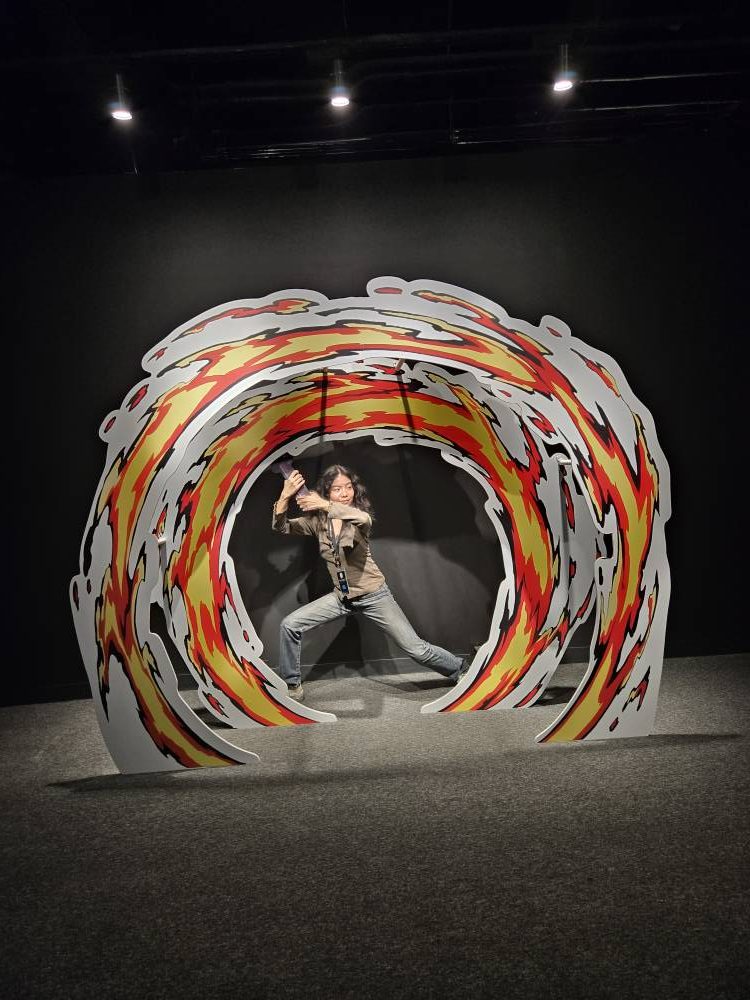
One should anticipate infiltrating the houses of the Entertainment District. This zone relives the journey of Tanjiro, Zenitsu and Inosuke in finding Ninja Hashira Uzui Tengen’s wives. The trio pretended to be girls to enter these houses. The beautifully decorated walls have secret holes and passages that will make you sit on the ground or crawl to get into them. There’s also a spot where visitors can check what their slayer level is.
Fans of the manga and anime could easily spend at least three hours in the exhibition. It’s a good balance of art and activities. There’s just so many things to do like pretending to practice the breathing techniques of water and fire at the photo stops.
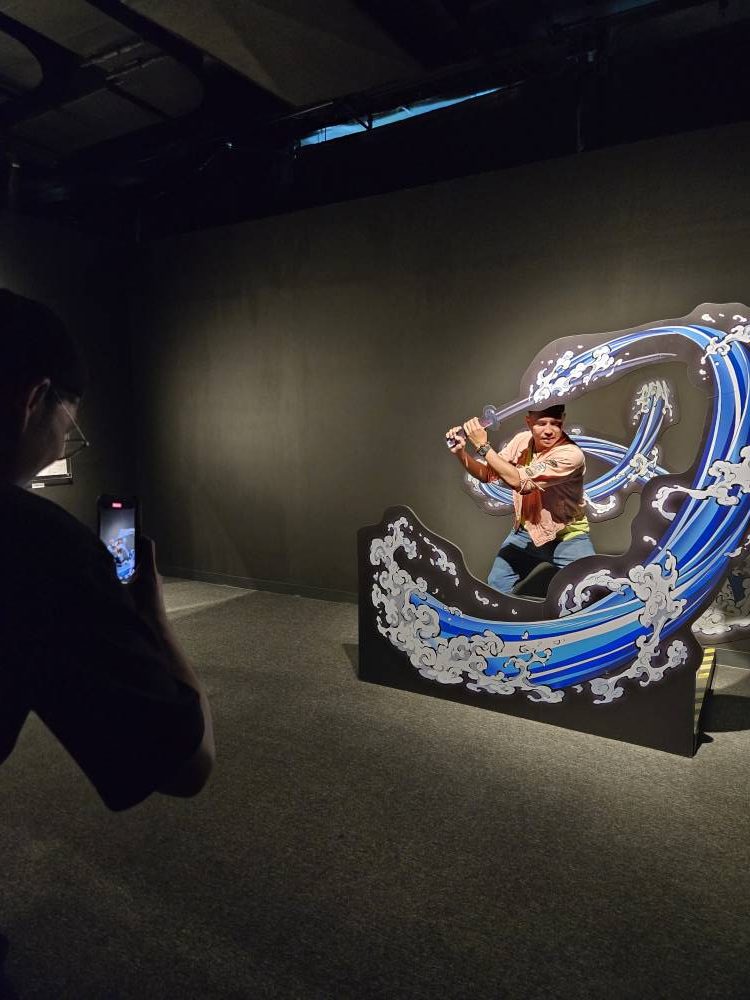
Outside the exhibit there are photo areas accessible to the public, like the standees that are supposed to show the actual height of the characters.
There are also Philippine-themed, limited-edition merchandise such as stickers, keychains, acrylic stands, bags, postcards, table mats, and gashapon collectibles. The designs feature Tengen on a jeepney, Tanjiro at Palawan’s Underground River, Inosuke at the Chocolate Hills, Zenitsu at the Maskara Festival, and Nezuko with halo-halo. “Demon Slayer”-themed food is also offered at the gift shop.
The exhibition, which runs until October 27, is located at Level 3, Gateway Mall 2. Tickets are available at pulptickets.com, SM Tickets, and TicketNet.








